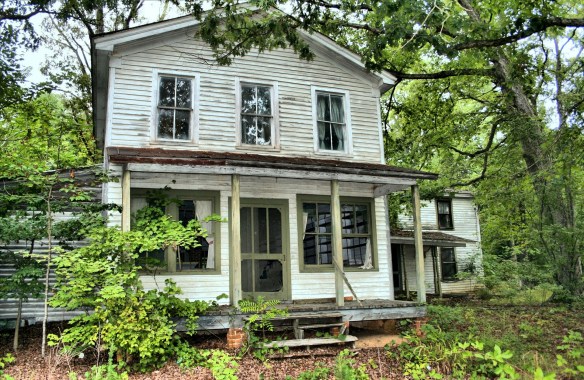Harvard’s Joint Center for Housing Studies has released its excellent State of the Nation’s Housing for 2017, with many important insights. The executive summary reads, in part,
A decade after the onset of the Great Recession, the national housing market is finally returning to normal. With incomes rising and household growth strengthening, the housing sector is poised to become an important engine of economic growth. But not all households and not all markets are thriving, and affordability pressures remain near record levels. Addressing the scale and complexity of need requires a renewed national commitment to expand the range of housing options available for an increasingly diverse society.
National Home Prices Regain Previous Peak
US house prices rose 5.6 percent in 2016, finally surpassing the high reached nearly a decade earlier. Achieving this milestone reduced the number of homeowners underwater on their mortgages to 3.2 million by year’s end, a remarkable drop from the 12.1 million peak in 2011. In inflation-adjusted terms, however, national home prices remained nearly 15 percent below their previous high. As a result, the typical homeowner has yet to fully regain the housing wealth lost during the downturn.
* * *
Pickup In Household Growth
The sluggish rebound in construction also reflects the striking slowdown in household growth after the housing bust. Depending on the government survey, household formations averaged just 540,000 to 720,000 annually in 2007–2012 before reviving to 960,000 to 1.2 million in 2013–2015.
Much of the falloff in household growth can be explained by low household formation rates among the millennial generation (born between 1985 and 2004). Indeed, the share of adults aged 18–34 still living with parents or grandparents was at an all-time high of 35.6 percent in 2015. But through the simple fact of aging, the oldest members of this generation have now reached their early 30s, when most adults live independently. As a result, members of the millennial generation formed 7.6 million new households between 2010 and 2015.
* * *
Homeownership Declines Moderating, While Rental Demand Still Strong
After 12 years of decline, there are signs that the national homeownership rate may be nearing bottom. As of the first quarter of 2017, the homeownership rate stood at 63.6 percent—little changed from the first quarter two years earlier. In addition, the number of homeowner households grew by 280,000 in 2016, the strongest showing since 2006. Early indications in 2017 suggest that the upturn is continuing. Still, growth in renters continued to outpace that in owners, with their numbers up by 600,000 last year.
* * *
Affordability Pressures Remain Widespread
Based on the 30-percent-of-income affordability standard, the number of cost-burdened households fell from 39.8 million in 2014 to 38.9 million in 2015. As a result, the share of households with cost burdens fell 1.0 percentage point, to 32.9 percent. This was the fifth straight year of declines, led by a considerable drop in the owner share from 30.4 percent in 2010 to 23.9 percent in 2015. The renter share, however, only edged down from 50.2 percent to 48.3 percent over this period.
With such large shares of households exceeding the traditional affordability standard, policymakers have increasingly focused their attention on the severely burdened (paying more than 50 percent of their incomes for housing). Although the total number of households with severe burdens also fell somewhat from 19.3 million in 2014 to 18.8 million in 2015, the improvement was again on the owner side. Indeed, 11.1 million renter households were severely cost burdened in 2015, a 3.7 million increase from 2001. By comparison, 7.6 million owners were severely burdened in 2015, up 1.1 million from 2001.
* * *
Segregation By Income on The Rise
A growing body of social science research has documented the long-term damage to the health and well-being of individuals living in high-poverty neighborhoods. Recent increases in segregation by income in the United States are therefore highly troubling. Between 2000 and 2015, the share of the poor population living in high-poverty neighborhoods rose from 43 percent to 54 percent. Meanwhile, the number of high-poverty neighborhoods rose from 13,400 to more than 21,300. Although most high-poverty neighborhoods are still concentrated in high-density urban cores, their recent growth has been fastest in low-density areas at the metropolitan fringe and in rural communities.
At the same time, the growing demand for urban living has led to an influx of high-income households into city neighborhoods. While this revival of urban areas creates the opportunity for more economically and racially diverse communities, it also drives up housing costs for low-income and minority residents. (1-6, references omitted)
One comment, a repetition from my past discussions of Joint Center reports. The State of the Nation’s Housing acknowledges sources of funding for the report but does not directly identify the members of its Policy Advisory Board, which provides “principal funding” for it, along with the Ford Foundation. (front matter) The Board includes companies such as Fannie Mae, Freddie Mac and Zillow which are directly discussed in the report. In the spirit of transparency, the Joint Center should identify all of its funders in the State of the Nation’s Housing report itself. Other academic centers and think tanks would undoubtedly do this. The Joint Center for Housing Studies should follow suit.








